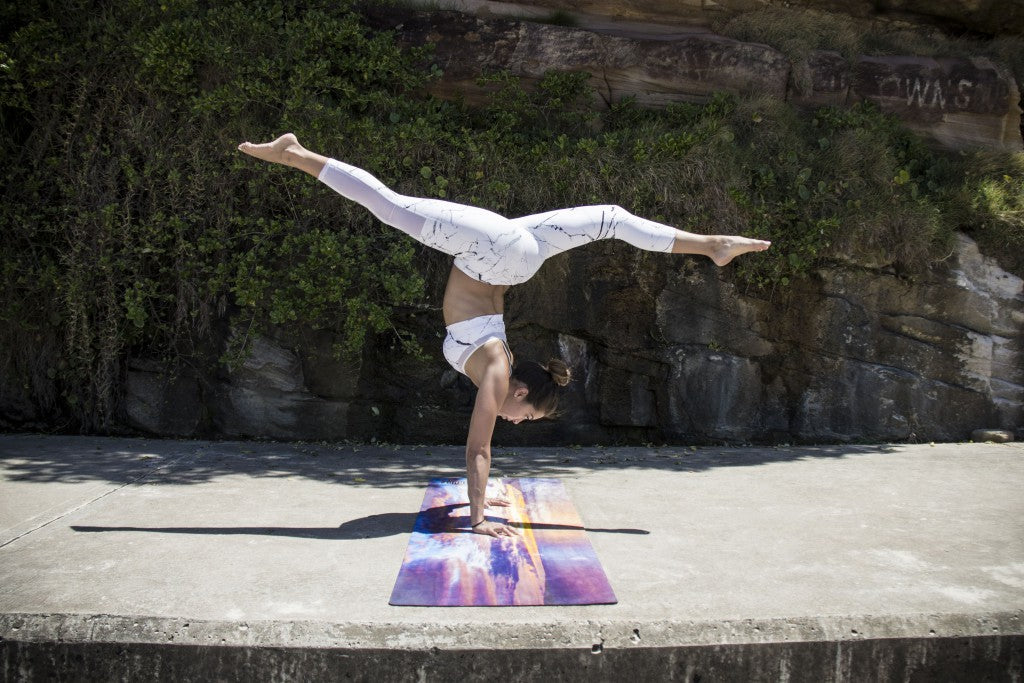Although yoga mats can be considered as a relatively new innovation, they can be found in the forms of deer and tiger skin dating back to ancient India. The first purpose-made yoga mats were produced in the 90’s, however these mats came with issues. The problem was that these mats were manufactured using PVC (polyvinyl chloride) and other chemicals, which are toxic to humans and the environment. The solution came in the shape of an eco yoga mat.
Materials – Base
There are a variety of environmentally friendly materials that can be used to produce an eco yoga mat, with many manufacturers claiming that their method is the most eco way. The materials range from organic natural rubber, recycled car tires, cork, jute, eco friendly polyurethane, and eco friendly polyester.
Organic natural rubber
Organic natural rubber is perhaps the most popular material used, and it comes from the ‘Hevea Brasilliensis’ tree. The ethically sourced tree can be tapped and produce rubber for up to 30 years, eventually being used for building or furniture after this time. In addition to being created sustainably, natural rubbers provide better grip and more cushioning for users compared with synthetic rubbers.

Jute
Jute is a natural vegetable plant fibre that is an alternative to natural rubber. The plant takes 45 months to grow to maturity, and is 100% biodegradable, making it a sustainable resource when creating an eco yoga mat.

Materials - Top
The top of an eco yoga mat is often made out of a different material, as this it to prevent slipping when in practise. It is important for the mat to have good grip after the user has been sweating. This is the reason for attaching a top to the base layer. Similarly to the base materials, there is a selection of materials that can be used for the top layer.
Eco-polyurethane
Eco-polyurethane foam is made by using renewable natural resources and can be found on the top of an eco yoga mat. Soybean, sunflower and rapeseed oil replace the traditional fossil fuel Polyols, and a more eco friendly supply chain makes for an environmentally friendly process. The foam offers brilliant grip that is essential for yoga practise.
 Eco-polyester
Eco-polyester
A substitute to the eco-polyurethane top is to use an eco-polyester top. Emerging developments has meant that polyester can now be obtained through recycled plastic bottles and recycled polyester fabric. The fibres produced not only provide grip to an eco yoga mat, but also keep bottles and other plastics out of landfills, further preventing methane gas production, which is a contributing factor to global warming.

The manufacturing process for an eco yoga mat removes the need for toxic glues by instead using a heat bonding procedure to join the top and base layer together. See the entire
How its made blog series and gain valuable insight into the creation of a variety of sports equipment.
 Eco-polyester
Eco-polyester The manufacturing process for an eco yoga mat removes the need for toxic glues by instead using a heat bonding procedure to join the top and base layer together. See the entire How its made blog series and gain valuable insight into the creation of a variety of sports equipment.
The manufacturing process for an eco yoga mat removes the need for toxic glues by instead using a heat bonding procedure to join the top and base layer together. See the entire How its made blog series and gain valuable insight into the creation of a variety of sports equipment.



